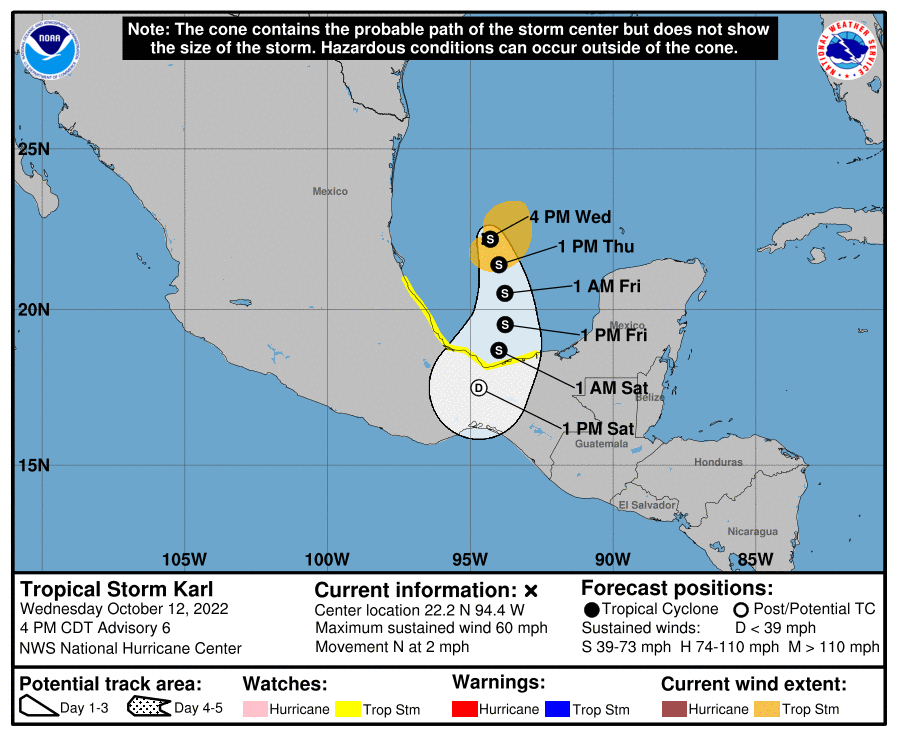
Hurricane Hunter aircraft investigating Tropical Storm Karl found it stronger earlier today and recent satellite scans from the GOES-East weather satellite confirm it is improving its structure and strength. While Karl is getting stronger in the Gulf of Mexico for now, it remains a non-issue for the U.S. coastline. Unfortunately, the same isn’t true for Mexico where Tropical Storm Watches are up for portions of the Gulf Coast.
Right now, a Tropical Storm Watch is in effect for the Gulf coast in Mexico from Tuxpan to Frontera. A Tropical Storm Watch means that tropical storm conditions are possible within the watch area, generally within 48 hours. According to the National Hurricane Center (NHC), additional watches or warnings may be required for portions of the coast of Mexico later tonight or on Thursday.
As of the latest advisory from the NHC, the center of Tropical Storm Karl was located roughly 240 miles north-northeast of Veracruz, Mexico. Karl’s maximum sustained winds were up to 60 mph while the minimum central pressure is down to 1002 mb or 29.59″.
According to the NHC, the tropical storm is forecast to move little overnight, but a slow motion to the south-southeast is expected to begin by Thursday morning. A faster generally southward motion is forecast by late Thursday, and that motion should continue through Friday night. On the forecast track, Karl will be approaching the coast of Mexico within the watch area on Friday. Meanwhile, some slight strengthening is possible tonight, followed by gradual weakening until landfall. Karl is still not forecast to reach hurricane strength.
Karl is expected to lash the coast with heavy rain, gusty winds, and rough surf. Karl is expected to produce 3-7″ of rain with isolated amounts up to a foot possible. Flash flooding with mudslides in higher terrain is possible. Tropical storm force wind conditions are possible along the Mexican coastline in the watch area starting Friday. Swells generated by Karl are expected to affect the Mexican coastline for the next few days. These swells are likely to cause life-threatening surf and rip current conditions.